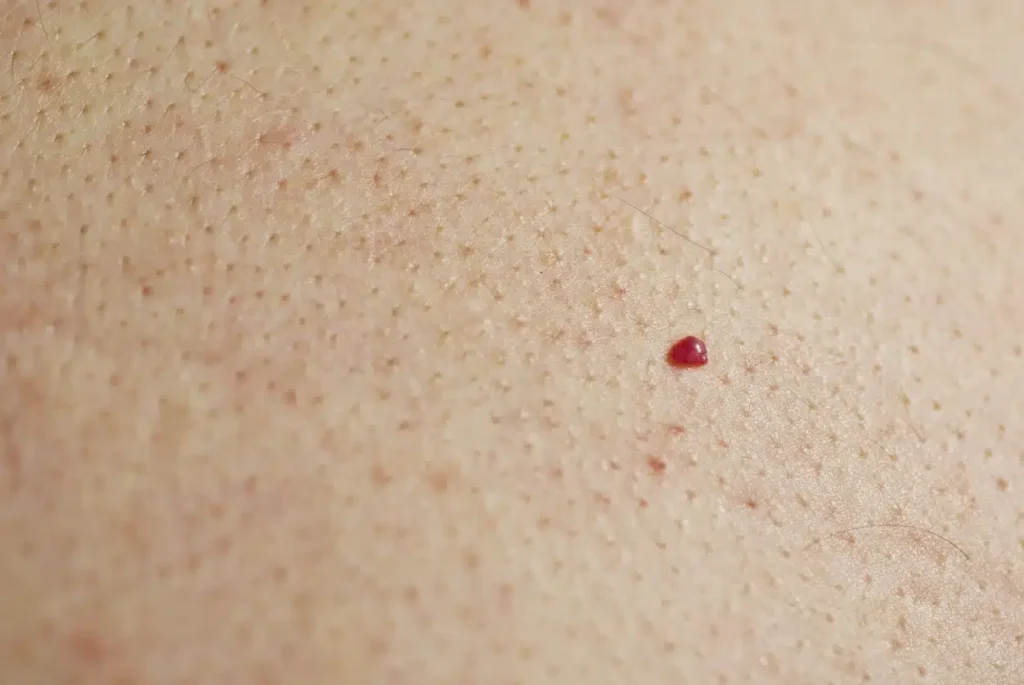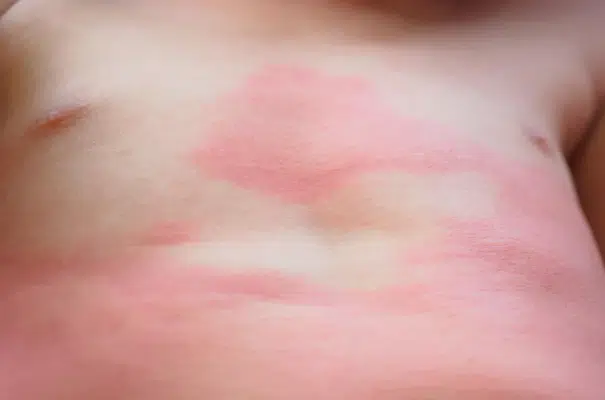
One morning, while getting dressed or stepping out of the shower, you notice a tiny red spot on your arm or chest. It doesn’t hurt, it doesn’t itch—it’s just there, quietly catching your eye. You brush it off… until another one appears. And then another. Just random dots? Or is your body trying to send you a signal? Maybe it’s time to take a closer look.
Not all red dots are created equal
Our skin is often the first place where internal issues show up. When something shifts beneath the surface, your skin tends to reflect it. These small red marks—differing in size, shape, and brightness—can stem from a wide range of causes. Sometimes they’re completely harmless, other times they could be your body’s subtle way of saying, “Hey, pay attention.”
The meaning of red dots on the skin
1. Petechiae: Tiny Signals Under the Skin

Petechiae are tiny red dots that often appear in clusters and remain visible even when you press on them. They form when tiny blood vessels burst beneath the skin. Sometimes, they can show up after intense physical effort—like heavy coughing—but if you notice a large number of them or they come with a fever, it could signal a blood-related issue that needs immediate medical attention.
2. Cherry angiomas: “red moles”

These small, bright red bumps—often referred to as “red moles”—are incredibly common after age 30. You’ll usually find them on the chest, arms, or back. They result from clusters of blood vessels near the skin’s surface. While they might look concerning, they’re totally harmless and just a normal part of the skin’s aging process.
3. Heat rash: summer under your skin

When the weather is hot or you sweat a lot, sweat can become trapped in your pores, leading to tiny, itchy red bumps. This condition, known as sudamina, is especially common in babies but can also affect adults—particularly in the summer or after heavy exercise.
4. Allergic reactions: know your triggers
From cosmetics and laundry detergents to certain foods and insect bites, allergens are all around us. A sudden red rash, especially if it itches or comes with swelling, is often your body’s way of saying it’s reacting to something. If symptoms include trouble breathing, seek emergency care right away.
5. Folliculitis: when hair follicles get inflamed

When a hair follicle gets blocked or infected, it can lead to a red, sore, or pus-filled bump. This condition, known as folliculitis, is generally harmless but might need topical treatments—or even antibiotics—if it spreads or doesn’t go away on its own.
6. Infectious cellulitis and impetigo: skin conditions that shouldn’t be ignored
Cellulitis is a bacterial infection that affects the deeper layers of the skin, causing it to become warm, swollen, red, and tender. Impetigo, often seen in children, results in yellowish crusts forming after fluid leaks from the skin. Both of these infections require swift medical care to prevent complications.
7. Vasculitis and hemangiomas: rarer cases

Vasculitis is a condition marked by inflammation of the blood vessels, often leading to ongoing redness and, in some cases, symptoms like fatigue. Hemangiomas, in contrast, are vascular abnormalities that may be present at birth or develop gradually. While they’re usually harmless, they can sometimes require regular check-ups with a dermatologist.
When should you see a doctor?
While most red spots on the skin are harmless, there are certain warning signs you shouldn’t ignore:
- A sudden and rapid outbreak of multiple spots
- Redness that comes with fever, fatigue, or pain
- Any noticeable change in the shape, size, or color of a spot
It’s always better to be safe than sorry. A quick visit to the doctor might be all it takes to ease your concerns.
Conclusion
Your skin has a way of speaking—and those tiny red dots might just be its way of sending a message. Whether it’s a mild allergic reaction, a bit of heat rash, or something more serious, it’s important to pay attention. When in doubt, treat it like a red warning light on your car’s dashboard: don’t wait—get it checked out.